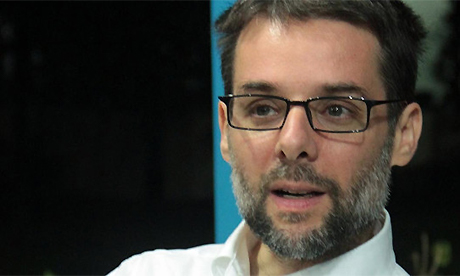“There’s a short path that is long, and a long path that is short”.
In the third seasons of the Netflix series “Shtisel,” an eminent ultra-Orthodox rabbi who heads a yeshiva in Jerusalem offers that bit of sage advice to a star student who is dealing with a life-and-death decision.
Short paths tend to become shortcuts leading nowhere, while wisdom suggests taking time to make a decision.
“A long path that is short” is indeed a good way to explain the virtue of synodality, the biggest wager Pope Francis has made for the Catholic Church today.
Five and half years after he delivered what can be called his magna carta on synodality to the 2015 assembly of the Synod of Bishops, the pope’s persistent push in favour of a synodal Church is having effects.
In different areas of the Catholic world, there are ecclesial events of a synodal nature unfolding or being prepared.
A synodal movement that requires time and presence
There is Australia’s historic Plenary Council, which will hold its first meeting in October. And there is the “synodal path” already underway in Germany.
Preparations are currently being made for a national synod in Ireland and, after much insistence from the pope, the Church in Italy is finally beginning plans for its own synod.
The editors of the Jesuit-run magazine, America, have just argued for the plenary council for the Catholic Church in the United States.
At the supra-national level, the Latin American bishops have launched their own ecclesial assembly, the first-ever “Ecclesial Assembly of Latin America and the Caribbean“.
This synodal movement is unfolding at a time of great uncertainty due to the coronavirus pandemic. Synodality, which means the people of the Church “walking together”, requires gathering together in assemblies.
Some of these assemblies (e.g. in Germany and Australia) have been delayed or postponed, and the same is likely to happen again in other places.
And it’s possible the next ordinary assembly of the Synod of Bishops — which is scheduled for October 2022 and based on the theme — “For a synodal Church: communion, participation, and mission” — could also be delayed.
It is not certain that participants from poor countries, where the pace of vaccinations is much slower, will be able to gather locally for the preparation phase or that their representatives will be able to travel to Rome.
The theological and institutional dimensions of synodality
Pandemic aside, postponing the assembly on synodality could be a good thing. It would mean more time for preparation.
So far, most of the discussion surrounding synodality has focused on its pastoral aspects.
But a two-article dossier published by theologians Serena Noceti, Rafael Luciani and Hervé Legrand in the latest issue of the Italian magazine Il Regno, points out that there are theological and institutional dimensions to synodality that need attention.
One particular aspect that will have to be addressed is the role of papal primacy in synodality — both at the universal level and the national/local level.
This is a key issue that will have important practical consequences.
In one of his first and most important speeches on the model of episcopal leadership, in September 2013, Francis talked about the bishop in these terms:
A pastoral presence means walking with the People of God, walking in front of them, showing them the way, showing them the path; walking in their midst, to strengthen them in unity; walking behind them, to make sure no one gets left behind but especially, never to lose the scent of the People of God in order to find new roads.
What is the role of the episcopal leadership in the synodal path together with the People of God? Walking in front of them, walking in their midst or walking behind them?
Discernment, not a vote in parliament
What we have seen from the Synod of Bishops assembly for the Amazon region (October 2019) and its aftermath (the apostolic exhortation Querida Amazonia of February 2020), Francis seems to understand his role as the referee of the presence or absence of genuine discernment in a synodal event.
This is how he phrased it in a note published in September 2020 by the editor of La Civiltà Cattolica, Antonio Spadaro, SJ:
There was a discussion [at the 2019 Synod] … a rich discussion … a well-founded discussion, but no discernment, which is something other than arriving at a good and justified consensus or relative majorities […] We must understand that the Synod is more than a parliament; and in this specific case the Synod could not escape this dynamic. On this issue the [2019] Synod was a rich, productive and even necessary parliament; but no more than that. For me this was decisive in the final discernment, when I thought about how to write the exhortation [Querida Amazonia].
This way of assessing synodality is more typical of the superior of a religious community that has undertaken a process of discernment than that of a bishop.
But the Catholic Church is not the Society of Jesus. Discernment works, if at all, in very rarified spiritual groups. Most bishops have no background or training in it.
The same can be said for the People of God who are supposed to be involved in synodality.
It’s especially since the late 1990s, also thanks to John Paul II’s encyclical Ut Unum Sint (1995), that we have started talking about a new role for the papacy in the ecumenical ecclesiology articulated at the Second Vatican Council (1962-65). Continue reading
- Massimo Faggioli is professor of theology and religious studies at Villanova University.
- First published in La-Croix International
